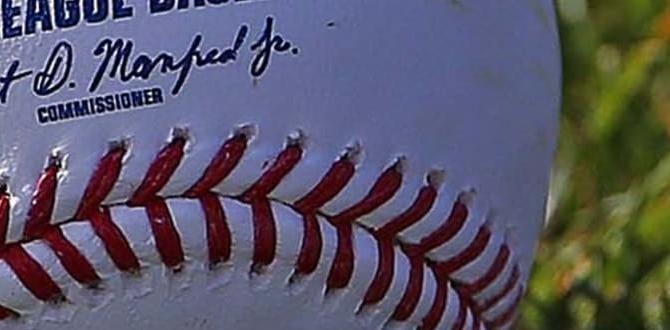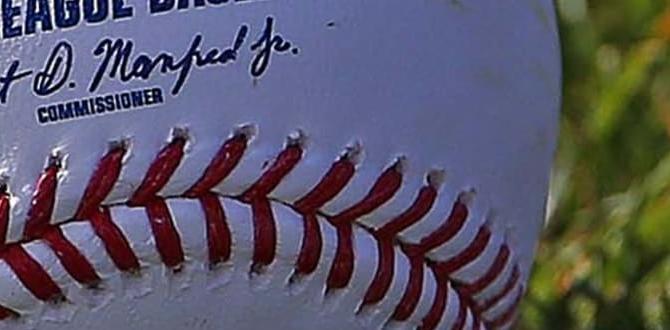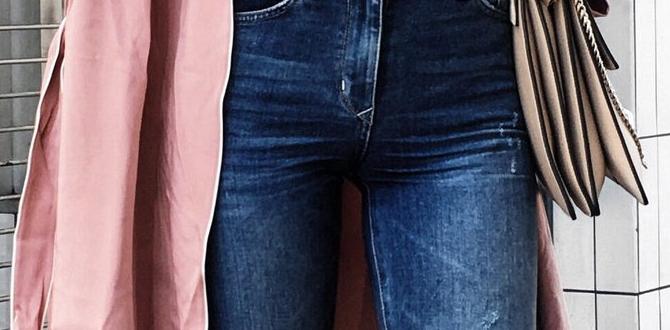Easton Shin Guards vs. Umpire Gear are not interchangeable. Easton shin guards are designed for players, specifically catchers, to protect their legs from errant pitches and foul tips. Umpire gear, on the other hand, is specialized protective equipment worn by umpires, often more robust and covering a wider area for their unique vantage point and risk of impact. Understanding their distinct purposes is key for safety and performance on the baseball field.
Hey, baseball fans! John P. Miller here from FriskMode. Ever found yourself staring at a pile of gear, wondering what goes where? It’s a common puzzle, especially when you’re starting out or looking to upgrade. Today, we’re zeroing in on a specific piece of protection that can cause a bit of confusion: shin guards. Specifically, we’re diving deep into “Easton Shin Guards vs Umpire Gear.” You might think they’re all the same, but trust me, they serve very different roles on the diamond. Choosing the right gear ensures you’re protected so you can focus on your game, whether you’re behind the plate or calling balls and strikes. We’ll break down exactly what makes them different, who needs them, and how to pick the best ones for your needs. Get ready to feel more confident about your gear choices!
Easton Shin Guards: The Catcher’s Best Friend
When we talk about Easton shin guards, we’re almost always referring to catcher’s shin guards. These are a vital part of a catcher’s protective setup, designed to shield the legs from the impact zone. A catcher’s job is tough. They’re in the squatting position for most of the game, directly in the line of fire for wild pitches, foul tips, and even collisions at home plate. High-quality shin guards are their first line of defense, absorbing shock and preventing serious injuries.
What Makes Easton Catcher Shin Guards Special?
Easton is a well-respected name in baseball equipment, known for its innovation and quality. Their catcher shin guards are engineered with a few key features in mind:
- Protection and Coverage: They offer robust padding over the shin, knee, and foot. This coverage is crucial to absorb the force of impacts.
- Mobility and Comfort: While protection is primary, catchers need to move. Easton designs their guards to allow for a good range of motion, especially in the knees and ankles, so catchers can block, receive, and throw effectively.
- Fit and Adjustability: Most models come with adjustable straps to ensure a snug and secure fit. This prevents the guards from shifting during play, which could otherwise lead to discomfort or reduced protection.
- Ventilation: Long games can get hot. Many Easton designs incorporate ventilation to help keep players cooler.
- Lightweight Design: Modern materials help keep the weight down without sacrificing protection, reducing fatigue over the course of a game.
For young players just starting behind the plate, or even experienced backstops, investing in a good pair of catcher’s shin guards from a reputable brand like Easton is non-negotiable. They are specifically designed for the unique demands of catching.
Umpire Gear: The Official’s Shield
Now, let’s switch gears to umpire gear. An umpire’s role is different but equally important, and they face their own set of hazards. Umpires, especially home plate umpires, need protection that allows them to perform their duties while staying safe from balls that aren’t caught or that deflect unexpectedly. Umpire gear is built with a different set of priorities than player equipment.
Key Characteristics of Umpire Protective Gear
Umpire gear, especially for the plate umpire, incorporates:
- Extensive Coverage: Umpire shin guards often extend higher up the leg and may wrap around more than a catcher’s guard. This is because umpires are positioned differently and may need protection from a wider angle of impact.
- Durable Construction: Umpire gear is often built to withstand more consistent, albeit perhaps less intense on a per-instance basis, impacts over a long season. The materials might be different, focusing on longevity and impact diffusion across a larger surface area.
- Specific Ergonomics: While catchers squat and move laterally, umpires primarily stand or squat, but their primary movement is often dictated by the flow of the game and game management. The gear is designed for this standing/squatting posture and visibility.
- Under-Padding/Integration: Some umpire gear is designed to be worn over pants with specific under-padding, or it’s a more integrated system.
- Visibility: In professional and higher-level amateur leagues, umpire gear might have specific color requirements or designs for visibility and uniformity.
Unlike baseball players who select gear based on personal preference, position, and hitting/throwing hand, umpires are often required to wear specific types of gear mandated by their league or association. The focus is on providing comprehensive protection for the official while allowing them sufficient freedom to call the game accurately and safely.
Easton Shin Guards vs. Umpire Gear: The Core Differences
Let’s put them head-to-head to see where they diverge. Understanding these distinctions is crucial when you’re selecting equipment.
| Feature | Easton Catcher Shin Guards | Umpire Shin Guards |
|---|---|---|
| Primary User | Catchers | Umpires (especially home plate umpires) |
| Focus of Protection | Legs, knees, and feet from direct impact (pitched balls, foul tips, collisions) | Legs and lower torso from wider angles of impact, often designed for standing/limited movement. |
| Coverage Area | Designed for squatting posture; covers shin, knee cap, and often under the kneecap. | Often longer, potentially covering more of the thigh; designed for a more upright stance or less deep squat. |
| Mobility Needs | High – requires flexion for squatting, blocking, throwing. | Moderate – requires ability to stand, squat, and move laterally for game calls. |
| Attachment/Design | Typically straps, often designed as a two-piece (shin/knee) unit. | Can be single unit or integrated with other umpire protective gear; often designed to fit over pants. |
| Material Emphasis | Impact absorption, flexibility. | Durability, broad impact diffusion, extended coverage. |
The fundamental difference lies in the intended user and their movement. A catcher’s guard is optimized for the catcher’s deep squat and the repetitive, direct impacts they face. An umpire’s guard is built for the umpire’s stance and the less predictable, but potentially more varied, impacts they might encounter while officiating.
Why Can’t I Use Umpire Gear as a Catcher?
Using umpire shin guards as a catcher is generally not recommended, and here’s why:
- Restricted Movement: Umpire shin guards can be bulkier and designed for a different range of motion. They might restrict your ability to squat deeply, move laterally to block pitches, or get into a strong throwing position.
- Less Optimal Impact Protection for the Catcher’s Role: While protective, they might not be designed to handle the specific types of direct, forceful impacts common in the catcher’s role, like a 90mph fastball straight to the shin. The padding might be distributed differently.
- Comfort and Fit: They may not fit as securely or comfortably in a catcher’s stance for extended periods, leading to chafing, slippage, or general discomfort that can distract from performance.
- Potential for Injury: If the gear doesn’t fit right or isn’t designed for the forces a catcher experiences, it could inadvertently increase the risk of injury or allow damage to pass through to the leg.
Why Can’t I Use Catcher Shin Guards as an Umpire?
Similarly, using catcher’s shin guards when umpiring is also not ideal:
- Incomplete Coverage: Catcher shin guards might not offer enough coverage in areas an umpire needs protection, especially if they are designed to cover a specific squatting footprint. The top of the shin or the thigh area might be more exposed.
- Different Impact Angles: Umpires face impacts from different angles. Catcher’s gear is optimized for direct frontal impact.
- Durability and Longevity: Umpire gear is often built for the rigors of officiating throughout an entire season, game after game. Catcher’s gear might wear out faster under those conditions.
- League Mandates: Most umpire associations have specific regulations on the type and style of protective gear worn for standardization and safety. Catcher’s gear will not meet these requirements.
The safest and most effective approach is always to use gear designed for your specific role on the field. For up-to-date information on protective equipment standards, the Official Baseball Rules can provide general guidelines, though specific umpire associations will have their own detailed requirements.
Choosing the Right Shin Guards: A Player’s Perspective
If you’re a player, particularly a catcher, looking for the best shin guards, here’s how to make an informed decision:
Factors to Consider When Buying Catcher Shin Guards
- Player Age and Skill Level: Youth players need lighter, less bulky gear that still offers good protection. As players advance, they might opt for more robust models.
- League Rules: Always check your league or association rules. Some youth leagues have specific requirements for equipment dimensions or materials.
- Fit: This is paramount. The shin guard should fit snugly against your leg, with no significant gaps between your shin and the guard, or between the guard and your foot. When you’re on your knees, the knee pad should be centered.
- Comfort: You’ll be wearing these for hours. They shouldn’t pinch, rub, or feel excessively hot.
- Adjustability: Look for multiple straps that allow for a custom fit.
- Protection Level: Higher-end models often offer more advanced padding and a sturdier shell. For serious play, consider triple-knee protection.
- Brand Reputation: Brands like Easton, Wilson, All-Star, and Rawlings are known for producing reliable catcher’s gear.
Popular Easton Catcher Shin Guard Models (Examples)
Easton offers a range of catcher’s gear. While models change and evolve, here are some types you might encounter:
- Easton Pro Series Catcher’s Shin Guards: Often a top-tier option, focusing on professional-level protection and advanced features for high-level players.
- Easton Elite Series Catcher’s Shin Guards: A step down from Pro but still offering excellent protection and comfort, suitable for competitive play.
- Easton Youth Catcher’s Shin Guards: Designed specifically for younger players, prioritizing lighter weight and easier adjustability while ensuring essential protection.
When buying, it’s always best to try them on if possible. Measure your leg from the middle of the kneecap down to the ankle to get an idea of length, but actual fit on your leg is the most important thing. Many retailers offer sizing guides online, but nothing beats a direct fit check.
Choosing the Right Gear: An Umpire’s Perspective
For umpires, the selection process is often more about meeting league standards and ensuring optimal functionality for their specific role.
Factors to Consider When Buying Umpire Gear
- League and Association Requirements: This is the number one factor. Your local or national umpire association will have rules dictating the type, size, and sometimes even the color of your gear. Failure to comply can mean not being allowed to officiate.
- Position: Home plate umpires require the most extensive protection. Field umpires usually need less.
- Comfort and Fit: Like players, umpires need gear that allows them to move naturally and comfortably without distraction. This includes freedom to squat, stand, and write down calls.
- Coverage: Ensure the gear provides adequate protection for the areas most at risk for your specific position. Home plate umpires need comprehensive leg and foot protection.
- Durability: Umpire gear is an investment. Look for gear made with durable materials that can withstand a full season and beyond.
- Breathability: Long games in warm weather can be tough. Gear that offers some ventilation will be appreciated.
Brands that are popular in the umpire community include Force3, Wilson (for umpire-specific lines), and Champro. Always consult your umpire association for specific recommendations and requirements.
The Training & Performance Connection
Proper gear isn’t just about avoiding injury; it’s about enabling better performance. For catchers, well-fitting shin guards mean confidence: confidence to block any pitch, to receive a curveball cleanly, and to throw out a runner without worrying about a foul tip rattling their shins.
For Catchers:
- Less Fatigue: Lighter, well-designed gear reduces fatigue, allowing catchers to stay sharp throughout the game.
- Increased Confidence: Knowing you’re protected allows you to focus on your primary job: catching, framing, and game calling.
- Better Technique: When you’re not worried about pain, you can better focus on your technique for blocking, receiving, and throwing.
The training of a catcher involves constant impact and demanding physical exertion. The right gear supports this training, allowing players to push their limits safely. Many drills focus on blocking, and good shin guards are essential for successful practice without injury.
For Umpires:
It might seem counterintuitive, but good umpire gear also impacts performance.
- Focus on the Game: When umpires are comfortable and well-protected, they can concentrate fully on making accurate calls, managing the game, and ensuring fair play.
- Endurance: Just like players, umpires need to maintain focus for an entire game. Comfortable, well-fitting gear contributes to this endurance.
- Player Trust: A well-equipped umpire often appears more authoritative and prepared, which can foster greater respect and trust from the players and coaches.
The ability to move freely and see the play clearly without equipment hindering you is key for any official. This allows them to execute their positioning and calls precisely, contributing to the smooth flow of the game. For training, umpires can practice their positioning and movement with their gear on to simulate game conditions.
Frequently Asked Questions About Baseball Shin Guards
Q1: Are Easton shin guards only for catchers?
A: While Easton makes high-quality shin guards that are excellent for catchers, the term “shin guards” can also apply to other sports. However, in baseball, when someone mentions Easton shin guards, they are almost always referring to catcher’s shin guards. They are specifically designed for the demands of that position.
Q2: Can I use shin guards from another sport, like soccer, for baseball?
A: No, it is not recommended. Soccer shin guards are designed for different types of impacts (kicks) and often don’t offer the necessary coverage or protection for baseball, especially for the direct, hard impacts a catcher faces from batted balls and pitches. Baseball catcher’s shin guards are much more robust and cover the knee and foot as well.
Q3: How often should I replace my catcher’s shin guards?
A: Shin guards don’t have a strict expiration date, but they should be replaced when they show significant signs of wear and tear. This includes cracked plastic, flattened padding, torn straps, or if they no longer fit securely. For competitive players, a lifespan of 2-4 years is common, depending on usage and quality.
Q4: What’s the most important feature in catcher’s shin guards?
A: Fit is the most crucial feature. Shin guards that fit well will stay in place, provide optimal protection, and offer the most comfort. Proper fit ensures the padding is where it needs to be to absorb impact effectively.
Q5: Do umpires wear special shin guards compared to catchers?
A: Yes, absolutely. Umpires, especially home plate umpires, wear specialized umpire shin guards. These are often designed for a different stance (more upright) and may offer broader side coverage. They are distinct from catcher’s shin guards, which are tailored for the catcher’s deep squat and direct frontal impacts.
Q6: Is there a difference in protection between youth and adult shin guards?
A: Generally, yes. Adult and higher-level youth shin guards tend to be more robust, with thicker padding and more durable shells. Youth models are often lighter and may have slightly less coverage to accommodate smaller, less experienced players, while still providing adequate safety.
Conclusion
Navigating the world of baseball gear




